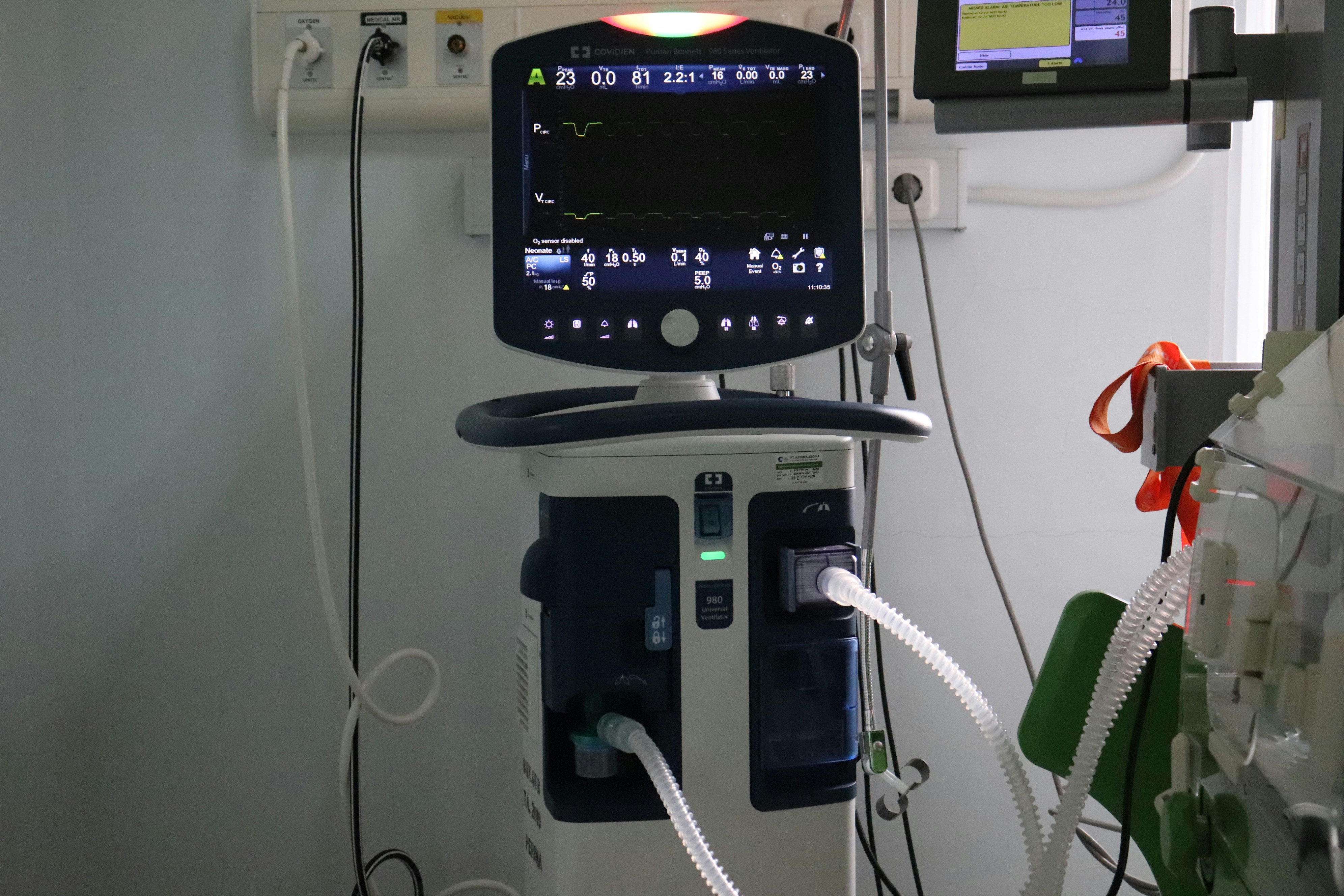
Why the UK Could Be the World’s Next Medical Technology Jobs Hub
Medical technology—often abbreviated as medtech—is one of the fastest-growing sectors in healthcare. From sophisticated diagnostic devices and surgical robotics to wearable health monitors and AI-powered imaging systems, innovation in medical technology is transforming patient care, streamlining hospital processes, and enabling personalised treatment at scale.
As the United Kingdom deepens its commitment to healthcare innovation, demand for professionals skilled in medtech development, regulation, manufacturing, and deployment is surging. With a rich heritage of scientific research, a globally respected healthcare system, and a dynamic life-sciences ecosystem, the UK is ideally placed to become the world’s next medical technology jobs hub.
This article explores why the UK has this potential, where demand is strongest, what kinds of roles are emerging, and what must happen to ensure the UK fulfils its role as a global centre for medtech careers.
1. The UK Medical Technology Landscape Today
The medtech sector in the UK is substantial and expanding quickly:
The UK medical technology industry is worth nearly £28 billion and supports well over 100,000 jobs across the country.
A significant portion of employment lies outside London and the South East, with materials, manufacturing and logistics hubs in regions such as the Midlands, North West, and Scotland.
Small and medium-sized enterprises (SMEs) make up the majority of companies in the sector, but major corporate players and multinational operations also maintain a strong presence.
Medtech exports are highly competitive, with UK-designed devices, surgical systems, wearable sensors, and diagnostics reaching global markets.
These facts demonstrate that medtech is already a powerful driver of economic value and talent demand, providing a firm foundation for future growth.
2. Why the UK Is Well Placed to Lead in Medical Technology
Several core strengths position the UK to become a global medtech jobs hub:
Reputable academic and research ecosystem: Institutions such as Imperial College, the Universities of Cambridge, Oxford, and UCL, among others, lead world-class medtech research in areas like biomedical engineering, imaging, biocompatible materials, biosensors, and robotic systems.
Strong healthcare system as early adopter: The NHS provides a unique environment in which innovations can be trialled, validated, and adopted at scale—particularly when they demonstrate clinical value or cost effectiveness.
Significant government backing: National strategies prioritise life sciences, with funding for R&D, innovation pathways, and regional levelling-up initiatives that support medtech development and job creation.
Established industry institutions and associations: The UK has a mature medtech ecosystem including trade bodies, regulatory authorities, test-bed facilities, and health innovation networks that support career pathways and commercial delivery.
Global reputation and trust: The UK’s adherence to rigorous medical safety standards, combined with strong regulatory capability, makes it an attractive location for medtech companies and professionals worldwide.
All these factors combine to give the UK's medtech ecosystem an advantage in talent attraction, research translation, and career growth.
3. Government Policy, Regulation & National Strategy
Strategic actions by government help drive medtech job growth:
The UK government’s Medical Technology Strategy emphasises strong supply chains, innovation adoption, and workforce development as means of boosting medtech capability and patient benefit.
The NHS’s Accelerated Access Collaborative streamlines pathways for promising medical technology innovations to reach frontline care more swiftly.
Regulatory updates following Brexit (e.g., a new UK Medical Device Regulation framework) create both opportunity and demand for professionals well versed in compliance, risk management, and quality systems.
Alignment with broader life-sciences and industrial policies, such as the Life Sciences Vision, ensures medtech careers receive sustained funding and strategic priority.
Together, these policy levers create new roles—especially in areas like regulatory affairs, clinical evaluation, adoption support, manufacturing, and compliance.
4. Education, Talent Pipeline & Skills Development
Building a skilled medtech workforce requires breadth of training and exposure:
Biomedical engineering and medical technology degrees are offered by UK universities, combining technical content with clinical and design projects.
Clinical engineering training programmes exist in NHS trusts and teaching hospitals, exposing trainees to device lifecycle management and hospital technology systems.
Professional certificates and short courses in medical device regulation, ISO standards (e.g., ISO 13485), quality assurance, and health innovation provide critical specialisation tracks.
Innovation fellowships and placement schemes help transition students and graduates from research to commercial and engineering roles.
Cross-disciplinary pathways—for example, combining engineering with data science, sensor design, robotics, or regulatory policy—create versatile medtech professionals capable of meeting modern career demands.
Despite strong educational foundations, employers highlight shortages in roles focused on clinical testing, regulatory quality systems, and transition from design to deployment—gaps which need addressing to fuel growth.
5. Infrastructure, Innovation Ecosystems & Leading Organisations
Medtech innovation relies on enabling infrastructure:
Clinical engineering hubs embedded in NHS trusts ensure devices are evaluated, maintained, and managed, creating roles in device safety, specifications, and user training.
Rapid prototyping and advanced manufacturing labs—such as those in university innovation centres—allow early-stage development from proof-of-concept to pilot production, offering technical and managerial career entry points.
Test houses and certification bodies provide validation and market entry assessment for devices, requiring professionals with skills in metrology, compliance, and clinical safety.
Health data, AI, and diagnostics labs combine emerging technologies with medtech, expanding demand for roles in algorithm design, data curation, and deployment integration.
Trade associations and health innovation networks support job growth by connecting innovators with NHS partners, regulatory bodies, and funding sources—supporting careers in advocacy, adoption, and commercialisation.
This comprehensive infrastructure helps medtech move from idea to impact, while generating technology-focused roles across the product lifecycle.
6. Sector-Specific Demand for Medical Technology Roles
Medtech spans a multitude of industry sub-sectors and specialties:
Surgical robotics: Engineers, software specialists, and test technicians are needed to design, test, and maintain robotic systems used in operating theatres.
Diagnostics and imaging: Development and deployment of AI-powered MRI, CT, ultrasound, and point-of-care testing devices generate demand for data scientists, systems engineers, and regulatory specialists.
Wearables and remote monitoring: Biomedical engineers and product developers work on wearable health monitors, sensor fusion systems, and personal diagnostics products.
Implantable devices: Roles are required in biocompatible materials, device design, quality testing, and sterile manufacturing.
Digital health platforms: Specialists in health software design, interoperability, cybersecurity, and cloud-based device integration extend the reach of medtech.
Assistive technology and prosthetics: Designers and materials scientists develop systems that help with mobility, sensory support, and neural interfaces.
Supply chain, logistics & procurement: Roles arise in ensuring safe and timely delivery of devices, training of clinical staff, and managing device lifecycles.
This sectoral diversity means professionals from disciplines such as engineering, software, clinical science, materials, regulatory affairs, and logistics all have pathways into medtech careers.
7. Job Roles & Career Pathways in Medical Technology
Key career paths include:
Device Design Engineer: Works on user-focused design, prototyping, and performance testing of hardware.
Software Architect for Medical Applications: Develops embedded software, UI design, and integration with clinical systems.
Quality Assurance / Regulatory Affairs Specialist: Ensures compliance with medical device regulations, prepares technical documentation, and manages submissions.
Clinical Validation Scientist: Plans and conducts user testing, clinical evaluations, and evidence gathering to support device claims.
Manufacturing and Scale-Up Engineer: Translates lab-scale prototypes into production processes under compliance and GMP standards.
Field Service Engineer: Installs, calibrates, and maintains devices in hospitals and clinics, often liaising between clinical staff and technical teams.
Health Technology Assessment (HTA) Consultant: Works with evidence generation, cost-effectiveness, and NHS evaluation processes to support adoption.
Product Manager / Commercial Manager: Oversees product launch, market strategy, and liaises with users, clinicians, and regulators.
Academic / R&D Scientist: Leads research into new materials, sensors, or algorithms for medical applications.
Clinical Engineering Manager: Guides device portfolios, hospital technology infrastructure, and capital planning in NHS trusts.
Career progression often moves from technical engineering into leadership, cross-disciplinary management, or clinical interface roles—providing strong long-term career trajectories.
8. Regional Medical Technology Hubs Across the UK
While London and the Golden Triangle are prominent, medtech jobs exist across the UK:
Cambridge and Oxford corridor: Dense with medtech startups, R&D spin-outs, and clinical research partners.
Northern England (Manchester, Leeds): Strong emerging presence in digital health, diagnostics, and device deployment within NHS trusts.
Scotland (Edinburgh, Glasgow): Focused on implantable devices, wearables, and healthcare software with close ties to universities.
South West (Bristol, Bath): Known for medical imaging, micromanufacturing, and assistive technology.
Midlands (Birmingham, Nottingham): Manufacturing clusters and hospital networks provide opportunities in larger-scale device production.
Low-cost-of-living regions: Offer growing roles in medtech development, prototyping and testing, sometimes supported by innovation grants and enterprise zones.
This regional spread ensures accessibility and helps unlock talent outside traditional tech hotspots.
9. Challenges & Risks to Overcome
Several challenges could impede the UK’s goal to become a global medtech jobs hub:
Regulatory complexity: Medical device regulation is rigorous, and navigating MHRA/CE requirements demands skilled specialists.
Long development timelines: Medtech product development can take years before market introduction, making early-stage careers uncertain without sustained funding and support.
Fragmented procurement: NHS adoption often faces bureaucratic delays, inconsistent practices across trusts, and budget constraints—slowing innovation uptake.
Skills shortage: Roles combining clinical understanding with engineering or regulatory knowledge are hard to fill.
Funding for scale-up: Many startups struggle to transition from prototype to production due to capital-intensive requirements.
Diversity gaps: Medtech remains technical-specialist dominated; improving inclusion and interdisciplinary training is needed.
Global competition: Other medtech hubs (e.g., Boston, Switzerland, Singapore) attract investment and talent—UK must differentiate through clinical integration and trust.
Addressing these challenges is essential to foster stable job growth and a thriving medtech ecosystem.
10. Global Competition: UK vs US, EU, Asia
The UK’s competitive medtech position is strong but must be actively defended:
United States: Home to large medtech clusters (e.g., Massachusetts / Silicon Valley), with substantial VC funding and academic-industry partnerships.
European Union: Germany, Switzerland, Sweden, and the Netherlands host significant device manufacturing, medical imaging development, and regulatory space.
Asia: Singapore, South Korea, Japan, and China are rapidly scaling medtech through government incentives and manufacturing capacity.
The UK can compete by emphasising clinical validation through the NHS, rigorous regulation, innovation in digital health, and collaborative innovation networks spanning academia, industry, and healthcare.
11. Salary Trends & Job Market Insights
Medtech roles tend to command attractive salaries due to specialist skills and clinical implications:
Entry-level roles, such as clinical engineering assistants or junior device engineers, typically start at £30,000–£45,000, depending on location and degree.
Mid-career professionals, like regulatory affairs specialists or validation engineers, earn £50,000–£80,000.
Senior and leadership roles, including product directors, commercial heads, or clinical engineering managers, often earn £90,000–£130,000+, particularly in London or key hubs.
Consultant and contractor roles, such as freelance regulatory experts or high-value HTA advisors, can command daily rates of £500–£1,000+.
Location and specialisation significantly affect remuneration: roles in surgical robotics, AI diagnostics, or implantable devices may offer premiums due to their complexity and risk profile.
Salary trends reflect the critical nature of medtech expertise and the high regulatory and clinical bar these roles must meet.
12. What Must Happen for the UK to Win
To become the world’s leading medical technology jobs hub, the UK should focus on:
Strengthening education and interdisciplinary training—expand clinical engineering, regulatory, and design courses; promote collaboration between engineering, medical, and policy education.
Streamlining regulatory pathways—accelerate device approval timelines and reduce entry barriers while maintaining patient safety.
Promoting NHS adoption pilot programmes—broadly deploy innovation test beds to reward proof of clinical value.
Supporting scale-up and manufacturing—provide capital, incentives, and facilities for UK startups to move to production.
Enhancing regional innovation clusters—foster medtech ecosystems outside London to spread opportunity.
Encouraging diversity and inclusion—ensure a wide range of perspectives and backgrounds enter medtech roles.
Facilitating global talent attraction and retention—through competitive immigration routes, funding, and collaborative grants.
Building stronger industry-academia-NHS partnerships—create shared innovation spaces, joint funding schemes, and cross-sector job pathways.
Focused action in these areas will help the UK build sustainable growth and leadership in medtech careers.
13. Conclusion
The United Kingdom already possesses many of the critical ingredients for leadership in medical technology careers: renowned academic institutions, clinical trial and deployment capacity via the NHS, established innovation infrastructure, and a thriving life-sciences industry.
If education providers, industry players, and government coordinate to strengthen regulatory navigation, regional development, educational pathways, and inclusive talent pipelines, the UK can become the world’s next medical technology jobs hub.
For students, engineers, scientists, regulators, and healthcare professionals alike, the message is clear: medtech offers one of the most meaningful and future-proof career paths available, and the UK is one of the most promising places to pursue it.


